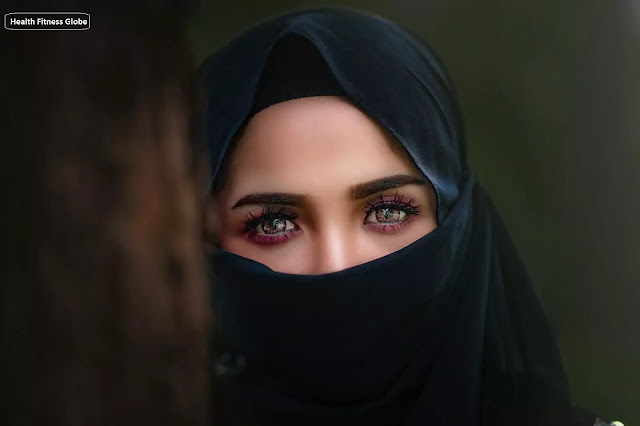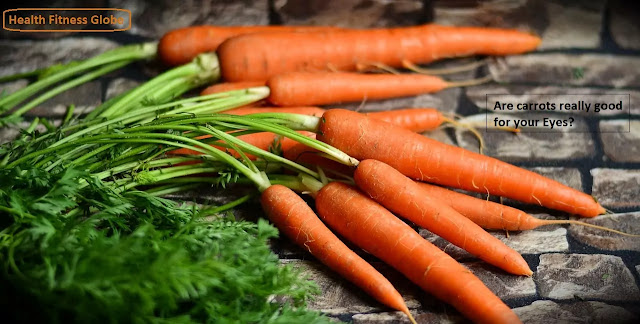15 Amazing facts about your Eyes
 |
| 15-Amazing-facts-about-your-Eyes |
While on the whole, we realize that a god-like has granted us such a significant number of favors to the organs of our body and we are grateful to him. One of them is vision.
Vision is so critical to the human experience that we occasionally underestimate our Eyes. The natural eye is an exceptionally perplexing organ that gives us the ability to meet the world in ways that our different faculties cannot. Although we use our Eyes for most of our waking hours, there are various fun and intriguing things that you may not have recognized about your Eyes and how they work.
1. The Eyes perceive things upside down
What we see is the light reflected by the articles and scenes we look at. In any case, because the cornea in the front of the eye is bent, it twists the light when it enters the eye, which means that the image is on top when it hits the retina in the back of the eye.
The moment the mind decrypts the image, it brings it back in the correct way in order to see the world effectively.
In an exam during the 1950s, the Austrian professor Theodor Ehrisman asked his companion Ivo Kohler to wear a pair of glasses that showed him the top turvy.
Fascinatingly, Kohler's mind adapted and began to see the world through glasses for about seven days. The study of milestones is still generally cited today, for example in the work Sachse et al. on visual observation in 2017.
2. The Eyes are full of gelatinous substance
80% of the natural eye is made up of a solid jam like a liquid considered to be fun glassy which is essential for the well-being and capacity of the Eyes.
This reasonable and lackluster substance occupies the space between the focal point and the retina of the eye. Vitreous intelligence is 99% water, the rest is a mixture of collagen, proteins, salts, and sugars. By filling the eye, vitreous fun is critical to maintaining the shape of the eye and keeping the delicate retina in place.
3. There are many protective features around the eye
Our highlights of the skull and face have advanced over a large number of years to ensure the delicate eyeball. The attack itself is discouraged in the skull, thereby ensuring a large portion of the eye with the bone.
The eyebrows are there to get the sweat from the temple and keep it away from the Eyes. Close eyelids protect the eye from light and particles when needed.
The lashes create a channel for the dust and the different particles, but they also act like the bristles of a feline or a mouse, detecting when something is close to the eye and snapping the eyelid to close it.
The entire length of the considerable number of eyelashes dropped by a human being in his life is more than 98 feet with each eyelash having a life the expectancy of around 5 months.
Despite these components, the eye is still one of our most delicate organs, in particular despite current risks such as false light and mechanical substances. The development hasn't found these new dangers, so eye safety is vital in these cutting-edge situations.
4. Overall we have a blind spot
We may feel like we see everything in front of us, but we really have a somewhat vulnerable side. This small segment of the visual field confronts the area of the optic circle, where the optic nerve leaves the eye and the veins enter.
Specialists are still unsure why we occasionally notice this vulnerable side. One hypothesis is that the mind fills the missing data using signals visible on earth, the other is that the vision of covering two Eyes implies that you see the vulnerable sides of the other.
5. The human eye can detect 10 million different colors
While there is some speculation about the point, tests dependent on those made by Gunter Woyzeck recommends recognizing up to 10 million shares. All shades in the range of light evident to people are composed of mixtures of red, green, and blue. The moment we see yellow it is a mixture of red and green, although purple is a mix of red and blue, etc.
A basic misconception is that shading is a property of light when it has a lot to do with the mind. It is not only the frequency of the rays of light that is reflected in the eye but besides the setting in which we see things, for example, shades of foundation, lighting, commonality, and environmental factors.
6. Eye color has little or no influence on vision
It has been proposed that blue and green eyes are more delicate to light than earth-colored Eyes and that earth-colored Eyes are progressively vulnerable to waterfalls.
Some investigations also indicate that individuals with earth-colored Eyes are better at reactive activities, such as racket sports, while individuals with lighter Eyes may be better at vital reasoning. Different investigations contest these hypotheses.
After various tests, hypotheses, and stories of old weds, the main thing that eye shadow analysts seem to agree on is that there is almost zero contrast between the visual abilities of individuals with various eye shades. Specialists also agree that everyone, paying little attention to eye shadows should use colored glasses to protect their eyes from the sun.
7. The red-eye effect in the photos is due to the blood vessels in the Eyes
Have you ever wondered why Eyes occasionally look red in photographs? The impact of the "red-eye" effect occurs when light from a camera strip or other bright light source is reflected on the camera. The reflected light illuminates the veins of the connective tissue in the back of the eye, which provides the red shading you see in the photographs.
8. Iris scans are more secure than fingerprints
Like a fingerprint, the iris is one of a kind for each person; it is not at all like comparing the fingers of each hand, the iris in each of our Eyes is not at all equal to each other.
Our irises have more than 256 new qualities, unlike those with fingerprints that only have about 40. This makes the iris filter for biometric structures significantly safer than fingerprints.
9. Being short-sighted or far-sighted depends on the shape of the eye
Being short-sighted or far-sighted depends on the state of the eye. Those with partial blindness or nearsightedness, the most widely recognized vision problem, have longer Eyes importance light is centered barely shy on the retina when studying separation.
For those with farsightedness or farsightedness, the eye is excessively short, which means that the point of emphasis on closing objects is behind the retina. The two conditions make the view misty in the separate separation and can be treated with focal points that modify the situation of the central point.
10. Your Eyes can burn-in the sun
Sunburn of the skin is currently known, but you have realized that you can also burn yourself from the sun of the eye.
The condition is called photokeratitis and can cause torment, redness, clouding, watery Eyes, expansion, and affectivity to light. In much the same way that the skin can strip after sunburn, photokeratitis can cause the corneal epithelium to "peel off". Impacts can be felt long after the presentation, so wear large shades constantly when in the sun.
11. We blink between 20,000 and 30,000 times a day
The researchers estimated that we flicker somewhere in the range of 20,000 to 30,000 times every day in general. Each flicker lasts only two-tenths of a second, however, this means approximately 1.5 hours per day.
Strabismus expels the earth and anoints the eye with soggy tears. Each flicker brings supplements to the structures of the surface of the eye, keeping them solid.
An examination also found a neurological flicker ability. He proposes that the brain pieces associated with vision and consideration experience a smaller than expected restoration, which could be central to the mind's abilities.
12. 80% of all visual impairments can be prevented or cured
The World Health Organization (WHO) estimates that over 80% of all obstacles to vision worldwide can be prevented and even restored. WHO presents several effective open private associations that have brought about a real change in eye well-being for those nations that have supported them?
These measures led to a generous reduction of onchocerciasis and impaired vision linked to the trachoma and a consequent reduction in the spread of irresistible diseases.
13. Are carrots really good for your Eyes?
A significant number of us were raised when we were informed that carrots are the best nourishment for the Eyes, although eating carrots will help us find in the dark.
While beta-carotene-rich vegetables are a solid expansion of your diet, it doesn't have explicit eye benefits alongside nutrient A, which is changed by beta-carotene in the body, but there are significantly improved nutrient sources.
For the well-being of the Eyes, it is ideal to eat smooth fish and green vegetables that contain lutein, zeaxanthin, and meso-zeaxanthin, which strengthens the defensive systems of the eye. Lutein and zeaxanthin normally occur in foods such as spinach, cabbage, and other green vegetables, while meso-zeaxanthin is found in some fish.
14. You will need glasses when you are older
Around 40, most people start to experience a condition called presbyopia. Presbyopia is the solidification of focal points in the Eyes and makes it progressively difficult to focus on excessively close objects.
Presbyopia often intensifies around the age of 50 as the focal points continue to solidify with age. As a result, many people will need glasses when they are 40 or 50 years old.
15. Using screenshots causes artificial vision syndrome
Studies recommend that half to 90% of people working on a PC screen show side effects of PC vision conditions (CVS). CVS is not an explicit problem, but a whole range of problems that are identified with eye fatigue and agony from an excessive amount of introduction to the screens.
By using a screen, your Eyes are constantly centered and united, the splendor and glow also make your Eyes more enthusiastic, after a while, this monotonous tension can negatively affect the muscles of the Eyes.













0 Comments
Kindly do not scam